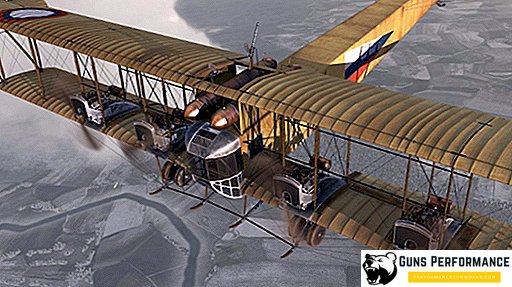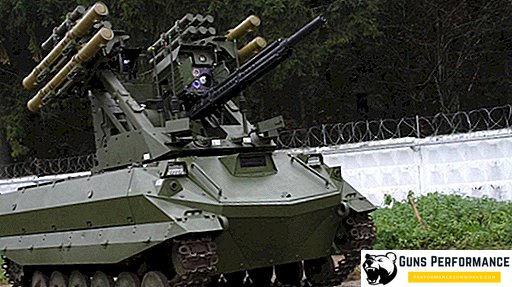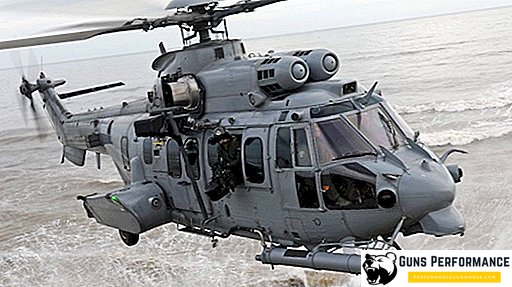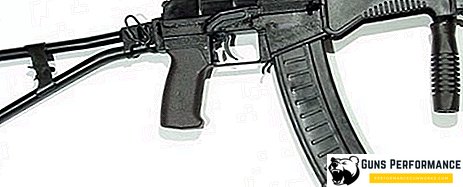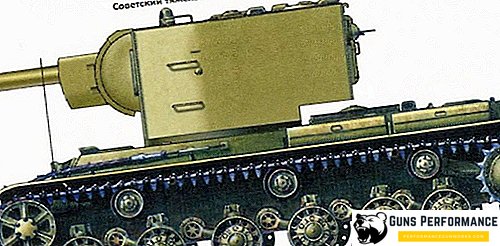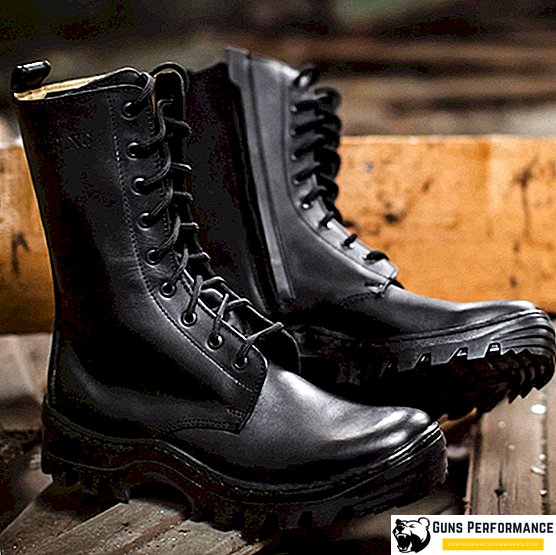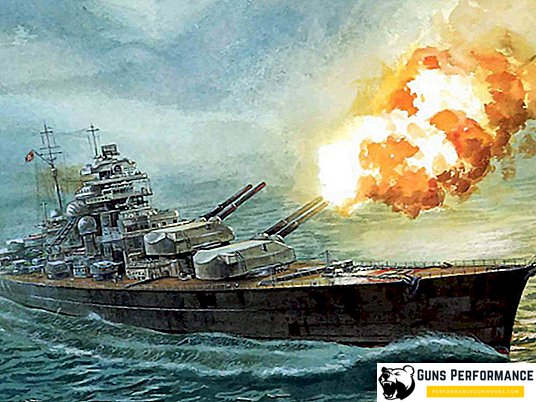
In 1939 two gigantic ships, the Bismarck and Tirpitz battleships of the same type, were launched from the stocks of Hamburg and Wilhelmshaven. Germany did not build anything comparable in size either before or after it. These battleships became a visible symbol of the resurgent power of the Third Reich. The appearance of the battleships made such an impression on Hitler that he gave the order to design an even more powerful ship with a displacement of 144 thousand tons, but the war canceled out these plans.
It was with these ships that the Germans hoped to turn their country into a first-class maritime power. But this was not to be. The battleships were well armed, had excellent protection, could reach speeds of up to 30 knots and walk 8,000 nautical miles without entering the port.
The British sent "Bismarck" to the bottom already during his first campaign, and the "Tirpitz" practically did not take part in the hostilities. However, by the very fact of his presence, he created a threat to the Allied Arctic convoys and squeezed much of the British Navy. Once the American admiral Alfred Mahan said that the fleet itself influences politics by the very fact of its existence. "Tirpitz" can be called a clear proof of this statement.
Throughout the war, the British tried to destroy the battleship, but they could only drown the pride of the German fleet at the end of 1944.
The battleship "Tirpitz" is one of the most famous ships in history: the fate of this vessel and its death still attract the attention of researchers.

Design and construction
After coming to power, the Nazis began to restore the former power of the German navy. Under the terms of the Versailles Peace of Germany, it was forbidden to launch ships with a displacement of more than 10 thousand tons. This led to the creation of the so-called pocket battleships - ships with a small displacement (about 10 thousand tons) and powerful armament (tools with a caliber of 280 mm).
It was clear that his main rival in the upcoming war would be the British Navy. In the German military, there was a discussion about what better ships to build in order to successfully conduct combat operations on enemy communications: underwater or surface.
In the mid-1930s, the secret plan Z was adopted, according to which the German fleet, for 10-15 years, was to replenish considerably and become one of the strongest on the planet. This program was never implemented, but the battleships envisaged by the plan were still launched.
The battleship Tirpitz was laid down on November 2, 1936 at the shipyard in Wilhelmshaven (on July 1, the Bismarck was laid). According to the original draft, the ship was supposed to have a displacement of 35 thousand tons, but in 1935 Germany refused to comply with the conditions of the Versailles Treaty, and the battleship's tonnage increased to 42 thousand tons. He received his name in honor of Admiral Alfred von Tirpitz - an outstanding naval commander and the actual creator of the German Navy.

The ship was originally conceived as a raider - having a high speed and considerable cruising range, the Tirpitz had to work on English communications, destroying transport ships.
In January 1941, the crew was formed, then began testing the ship in the eastern Baltic. The battleship was found fit for further exploitation..
Description
The battleship Tirpitz had a maximum displacement of 53,500 tons, with a total length of 253.6 meters and a width of 36 meters. The ship was perfectly protected: the armor belt covered 70% of its length. The thickness of the armor ranged from 170 to 320 mm, the cabin and the main caliber towers had even more serious protection - 360 mm.

Each tower of the main caliber had its own name. In addition, it should be noted the excellent fire control system of ship artillery, excellent German optics and excellent training of gunners. Guns "Tirpitz" could hit 350-mm armor at a distance of up to twenty kilometers.
Armament "Tirpitz" consisted of eight main-caliber guns (380 mm), located in four towers (two bow and two feed), twelve 150 mm guns and sixteen 105 mm guns. The anti-aircraft armament of the ship, consisting of 37-mm and 20-mm guns, was also very powerful. Tirpitz also had its own aircraft: there were four Arado Ar196A-3 aircraft on board and a catapult to launch them.
The ship's power plant consisted of twelve Wagner steam boilers and three Brown Boveri & Cie turbines. She developed a capacity of more than 163 thousand liters. pp., which allowed the ship to have a speed of more than 30 knots.
The range of the Tirpitz (at a speed of 19 knots) was 8,870 nautical miles.
Summarizing all the above, we can conclude that the Tirpitz could resist any Allied ship and posed a serious threat to them. The only problem was that the number of pennants in the American and English fleets was much higher than in the German one, and the tactics of combat operations at sea preclude knightly "one-on-one" duels.

The British were afraid of the German battleships and closely followed their movements. After the battleship Bismarck entered the sea in the spring of 1941, the main forces of the British fleet were thrown at its interception, and finally the British managed to sink it, although this cost them the loss of the first-class battleship Hood.
Operations involving "Tirpitz"
After the loss of "Bismarck" Hitler was somewhat disappointed in the surface fleet. The Germans did not want to lose the last true battleship and used it extremely rarely. The superiority of the English fleet in the Atlantic was almost overwhelming, so the Tirpitz was sent to Norway, where he stood idle until the moment of his death.
However, despite this passive behavior of the flagship of the German fleet, the British did not give him rest and put a lot of effort to destroy it.
On September 20, 1941, Hitler ordered the formation of a group of ships (Baltenflotte) in the Baltic Sea to prevent a possible breakthrough of the remnants of the USSR Baltic Fleet to neutral Sweden. "Tirpitz" was appointed the flagship of this compound. However, this group was soon disbanded, and the Reich military leadership decided to send a battleship to Norway to ensure its greater security.
In March 1942, the German command received information about two Allied convoys: PQ-12 and QP-8. PQ-12 sailed from Iceland and consisted of 16 transport ships. QP-8 was released the first of March from Murmansk. On March 5, the Tirpitz left the Fetten Fjord and, accompanied by three destroyers, went to intercept the convoys. Through the Arctic Ocean, the battleship headed for Bear Island.
At the same time, there were significant forces of the English Navy at sea, including the main forces of the metropolitan fleet, under the command of Admiral Tovey, who had drowned the Bismarck. They were looking for Tirpitz.
Bad weather conditions precluded the use of air reconnaissance by both sides. Because of this, the British could not find the German battleship, and the Germans missed both convoys. One of the German destroyers discovered the Soviet timber carrier Izhora and sank it. On March 9, an English reconnaissance aircraft was able to find the Tirpitz, after which the Germans decided to return the ship to the base.
It was Tirpitz that played a dramatic role in the fate of the PQ-17 convoy. In the summer of 1942, the Germans decided to conduct a rapid operation involving a large number of heavy ships to completely destroy this convoy. The operation was called Rösselsprung ("Knight's move"). In addition to the Tirpitz, the cruisers Admiral Scheer and Admiral Hipper were to take part in it. German ships were forbidden to engage in battle with equal or superior enemy forces.
Having learned about the disappearance of the "Tirpitz" from the place of its permanent stay, the English naval leadership ordered the convoy to disband and withdraw the cruisers and destroyers of its escort to the west.
July 1, the battleship was discovered by the British submarine HMS Unshaken, which transmitted data to the leadership. The Germans intercepted this message and were able to decrypt it. Realizing that Tirpitz was found, the Germans decided to stop the operation and return the battleship to the base. The convoy PQ-17, left uncovered, was badly damaged by the actions of submarines and aircraft.
One more story is connected with this “Tirpitsa” exit to the sea, namely, the attack on the battleship of the Soviet submarine K-21 under the command of Captain 2nd rank Lunin. The boat made a volley of four torpedoes on the Tirpitz. They could not see the results of their attack, but they heard several strong and weak explosions. Lunin considered that as a result of his attack Tirpitz was damaged and one of the escort destroyers was sunk.
Information on the damage of the battleship as a result of the K-21 attack can be found in the Soviet and Russian literature, in German sources there is no information about it at all. The Germans simply did not notice this attack. Some of the modern experts believe that in those conditions (firing range, its angle) the Soviet submarine could not get on the German ships, and the explosions are the result of the detonation of torpedoes on the seabed.
Another operation, which attracted "Tirpitz", was the attack of German forces on Svalbard. It began in September 1943 and was named Sizilien ("Sicily"). The Germans approached the island and after shelling it from battleships and destroyers, landed troops. It was the only operation in which Tirpitz used his artillery. It should be noted that this ship has not fired a single projectile on any enemy ship.

Operations against the "Tirpitz" and the death of the battleship
The battleship "Tirpitz" did not give rest to the British military leadership. After losing the Hud, the British understood perfectly well what the German flagship was capable of.
In late October 1942, Operation Title began. The British decided to sink the "Tirpitz" using torpedoes driven by man. They planned to tow the submarine to the location of the battleship underwater with the help of a fishing boat. However, almost at the very entrance to the harbor with the Tirpitz there was a strong wave that caused the loss of both torpedoes. The British flooded the boat, and the sabotage team on foot went to Sweden.
Almost a year after these events, the British began a new operation to destroy the ship, it was called the Source ("Source"). This time it was planned to destroy the battleship with the help of ultra-small submarines (project X), which were to drop charges with explosives under the Tirpitz hull. Each of these boats had a displacement of 30 tons, length - 15.7 m and carried two charges, each of which contained almost two tons of explosive. Six mini-submarines took part in the operation, and ordinary submarines were towed to the place of its conduct.
Submarine submarines were supposed to attack not only Tirpitz, but additional targets were Scharnhost and Lutz.
Only two boats (X6 and X7) managed to drop their charges under the bottom of the ship. After which they surfaced, and their crews were captured. "Tirpitz" did not have time to leave the parking lot, the explosions caused him considerable damage. One of the turbines was blown off the bed, the frames were damaged, the main caliber tower “C” was jammed, several compartments were flooded. All rangefinders and fire control devices were destroyed. The battleship for a long time was disabled. The captains of the X6 and X7 submarines in their homeland were honored with Victoria's crosses — the highest military awards of the empire.
The Germans were able to repair the "Tirpitz" only in the spring of 1944 and he again became dangerous. It should be noted that the repair of the battleship after very severe damage, made without a dry dock - this is a real achievement of German sailors and engineers.
At this time, the British begin a new operation against "Tirpitz" - Tungsten ("Wolfram"). This time the emphasis was on the use of aviation. The operation involved several British aircraft carriers. Two waves of Fairey Barracuda torpedo bombers carried not torpedoes, but different types of bombs. As a result of the raids, the ship was badly damaged. Bombs could not penetrate the armor hull of the battleship, but the superstructure was seriously destroyed. 123 members of the crew were killed, another 300 were injured. Restoration of "Tirpitz" took three months.

Over the next few months, the British made several more raids on the ship (Planet, Brawn, Tiger Claw and Mascot operations), but they did not bring any special results.
September 15, Operation Paravane began. Aircraft Avro Lancaster British Air Force took off from the airport near Arkhangelsk and headed for Norway. They were armed with tallboy 5-ton bombs and underwater mines. One of the bombs hit the nose of the ship and caused such damage that the battleship almost lost seaworthiness. To transport the Tirpitz to dry dock and to carry out a major overhaul at the end of 1944, the Germans no longer had the opportunity.
The battleship was transferred to the Gulf of Serbotn near the island of Hokoy and turned into a floating artillery battery. At this location he was within the reach of aviation from British aerodromes. The next raid (Operation Obviate) was unsuccessful due to bad weather.
The raid on November 12 (Operation Catechism), during which three Tallboy heavy bombs struck the battleship, was fatal for the ship. One of them rebounded from the armor of the tower, but the other two pierced the armor belt and led to the flooding of the Tirpitz. Of the 1,700 crew killed 1000, including the captain. Until now, the passive behavior of the Luftwaffe, whose aircraft made no attempt to prevent the bombing, is unclear.
After the war, the battleship wreckage was sold to the Norwegian company, which dismantled the remains of the ship until 1957. The bow part of the Tirpitz remained lying where the ship accepted its last battle.
Not far from the place of death of the battleship a monument was erected to the dead crew members.
"Tirpitz" is one of the most famous warships. Hundreds of articles and books have been written about the battleship, films have been made about it. Of course, the history of this ship is one of the brightest pages of the Second World War.
Despite the fact that Tirpitz practically did not use his weapons in battle, his influence on the course of the war in the North Atlantic and Arctic was enormous. After its destruction, the Allies were able to transfer significant naval forces to other theaters of operations: the Pacific and Indian Ocean, which significantly worsened the situation in Japan.



